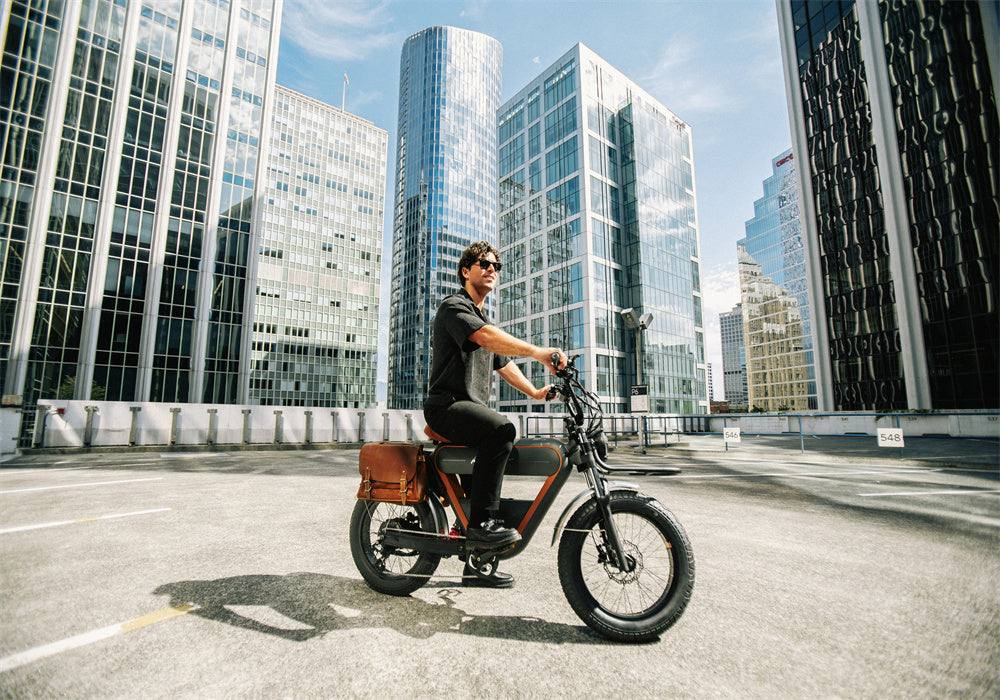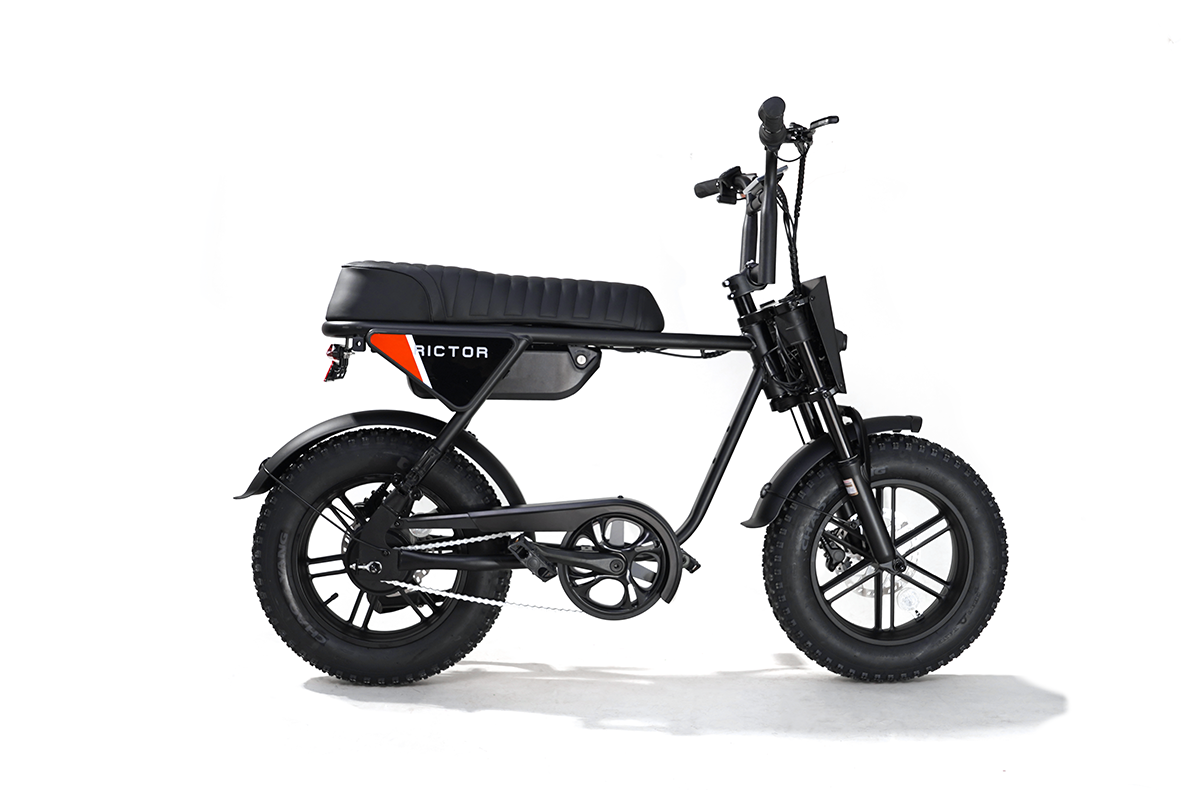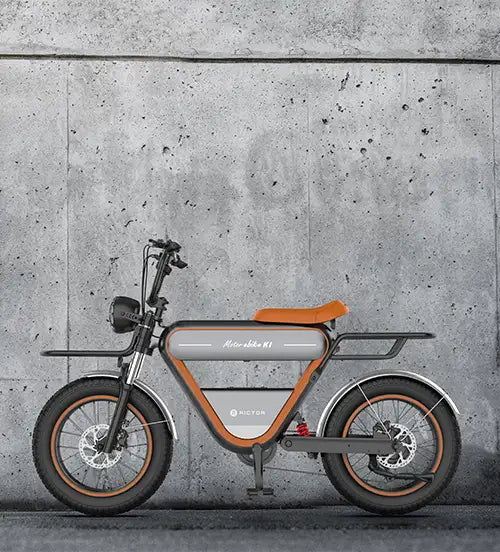
What's the Difference Between an E-Bike and Normal Bike?
An electric bike adds power to your ride, while a normal bike relies only on your legs. This key difference affects how you ride, where you can go, and who can enjoy cycling. This guide breaks down the main differences to help you decide which type of bike might work better for your needs.
Power Source
The biggest difference between electrical bicycles and normal bikes is how they move. Normal bikes work only with your leg power. You push the pedals, and that's what makes the bike go forward. The harder you pedal, the faster you go.
E-bikes have a motor and battery that help you pedal. When you push the pedals, the motor gives you a boost. Most electrical bikes let you choose how much help you want from the motor. You can pick low help when you want more exercise or high help when riding up steep hills or going against strong winds.
SEE ALSO Which Is Better: 500W or 750W Electric Bike for Your Riding Style?
Motor Power and Torque
Normal bikes don't have motors, so they rely solely on the force your legs can produce.
Electrical bicycles have motors that provide both power (usually measured in watts) and torque (measured in Newton meters or Nm). Torque is especially important because it measures the rotational force that helps you accelerate and climb hills.
Higher torque means stronger acceleration and better hill-climbing ability. For example, the cafe racer style electric bike RICTOR K1 has 85Nm of torque, which gives it impressive acceleration and the ability to climb steep hills with ease. This high torque is particularly helpful when:
-
Starting from a complete stop
-
Climbing steep hills
-
Carrying heavy loads
-
Riding against strong headwinds
Most commuter electric bicycles have torque between 40-70Nm, while performance and mountain electrical bikes often offer 70-90Nm or more.
Speed and How Fast You Can Go
On a normal bike, your speed depends on how strong you are, how hard you push, and the terrain. Most casual riders go about 10-15 miles per hour on flat ground.
Electrical bikes can go faster with less effort. In the US, most electric bicycles can help you reach 20 mph, while some can go up to 28 mph. This makes powered bikes great for getting to places faster, especially if you're commuting to work or running errands.
Exercise Benefits
Normal bikes give you a better workout because you do all the work. Your legs, heart, and lungs all get a good workout. If you want to get fit and burn calories, a normal bike is an excellent choice.
Electric bicycles still give you exercise, just less intense. You still pedal, but the motor helps you. This makes motorized bikes perfect for people who:
-
Are just starting to get fit
-
Have joint problems or injuries
-
Want to bike without getting too sweaty
-
Need to travel farther without getting tired
Many electric bike riders find they bike more often and go further than they would on a normal bike.
How Far You Can Go
A normal bike can go as far as your energy lasts. If you're fit, you might ride 20-40 miles in a day. With breaks and food, some cyclists go hundreds of miles over several days.
Electrical bicycles are limited by battery life. Most powered bikes can go 20-50 miles on one charge, depending on:
-
How much you use the motor
-
How hilly the route is
-
How much you weigh
-
The weather and wind
-
The size of the battery
When the battery runs out, you can still pedal an electric bike, but it feels much heavier than a normal bike.
Weight
Normal bikes are much lighter, usually weighing 15-30 pounds. This makes them easy to lift, carry upstairs, or put on a car rack.
Electric bicycles are heavy, often weighing 40-70 pounds because of the motor, battery, and stronger frame. This extra weight can make them harder to:
-
Carry up stairs
-
Load onto car racks
-
Store in small spaces
-
Handle when not riding
Upkeep and Repairs
Normal bikes need basic care like cleaning, oiling the chain, and checking the brakes. Many riders learn to do these simple fixes themselves.
Electrical bikes need all the same care as normal bikes, plus:
-
Battery charging and care
-
Motor maintenance
-
Electronic system checks
When electric bicycles have problems with their electrical parts, you usually need a shop to fix them. These repairs often cost more than fixes for normal bikes.
Price
Normal bikes cost much less. You can get a good quality normal bike for $400-$1,000. High-end models might cost $2,000-$5,000.
Electric bikes start around $1,000 for basic models. Good quality electrical bicycles usually cost $2,000-$4,000, and top models can exceed $5,000.
Powered bikes also have extra costs over time. The biggest is replacing the battery (about $300-$800) every 3-5 years. Repairs for electrical parts also cost more than fixing mechanical parts on normal bikes.
Who They're Best For
Normal bikes work well for:
-
People who want a good workout
-
Riders on a tight budget
-
Those who enjoy the simplicity of mechanical devices
-
Cyclists who need a lightweight bike they can easily carry
Electric bicycles are better for:
-
Commuters who don't want to arrive sweaty
-
People with knee problems or limited fitness
-
Riders in hilly areas
-
Those who need to carry heavy loads or children
-
Anyone who wants to keep up with faster cycling partners
Conclusion
Normal bikes offer simplicity, lower cost, and better exercise. Electric bikes provide easier riding, especially on hills, and help you go farther with less effort. The added torque of electrical bicycles makes them excellent for tackling challenging terrain and carrying cargo. Your choice depends on your budget, fitness level, and how you plan to use your bike.
FAQs
Will I still get exercise on an electric bike?
Yes, you still need to pedal on most electrical bicycles. Studies show electric bike riders get moderate exercise and often bike more frequently than traditional cyclists because it's more enjoyable and less tiring.
How long does an electric bike battery last?
Most electrical bicycle batteries last for 500-1000 full charges, which means about 3-5 years for average riders. Taking good care of your battery by not letting it get too hot or cold can help it last longer.
Can I ride an electric bike anywhere I can ride a normal bike?
Not always. Some bike paths, mountain trails, and parks have rules about powered bikes. Always check local rules before riding, especially on trails or in parks.




